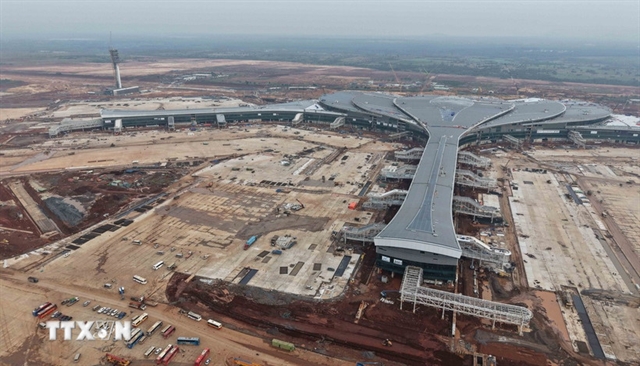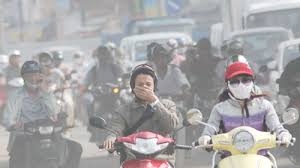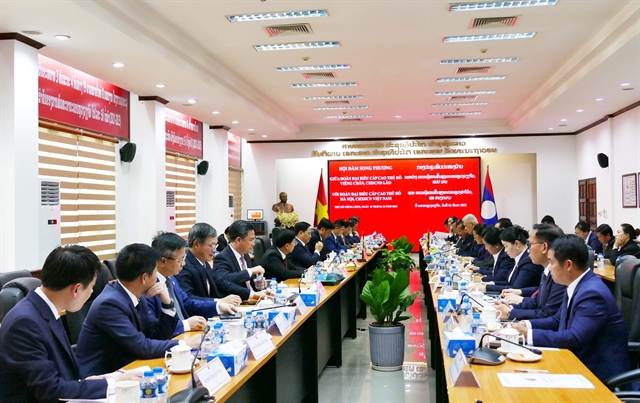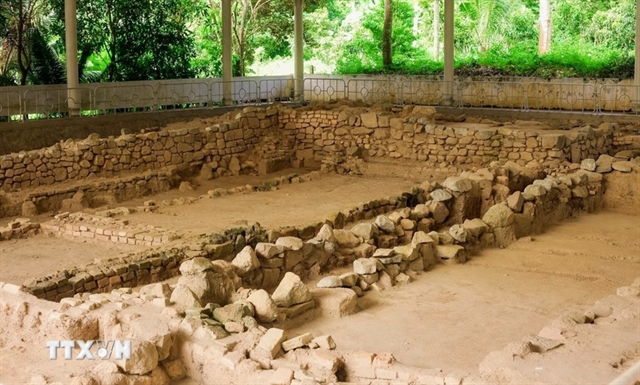 Society
Society

Keeping close-control of emission sources discharged from thermal power plants, industrial factories and traffic was an urgent task in the coming years, the National Action Plan on Air Quality Management until 2020 reported.
 |
| Road users in Hà Nội are struggling with high dust levels. File photo |
HÀ NỘI – Keeping close-control of emission sources such as thermal power plants, industrial factories and traffic was an urgent task in the coming years, the National Action Plan on Air Quality Management until 2020 reported.
At the launching of the Action Plan yesterday in Hà Nội, Võ Tuấn Minh, Deputy Minister of Natural Resources and Environment said environmental pollution has become a serious problem in Việt Nam due to the country’s industrialisation process.
Environmental incidents were involved in water, solid waste and the air.
The causes of air pollution were identified from waste discharge sources of industrial factories, thermal power plants, traffic and handicraft village’s production.
“Controlling air pollution in the future focuses on two cities of Hà Nội and HCM City, both of which have large traffic systems, numerous industrial zones and big populations," he said.
“For the 2016-2017 term, we must calculate emissions from cement, fertilizer, iron and steel production factories and thermal power plants.”
Developed by the Natural Resources and Environment Ministry, the Action Plan has an overall goal of strengthening air quality management works via controlling sources of emissions and supervising the surrounding air quality in order to improve the quality of air in the environment and ensure the community’s health.
The detailed aims included: assessing the real situation of dust pollution in cities, supervising greenhouse gas emissions, and increasing the use of automatic air monitoring stations, according to Nguyễn Trường Huynh, from the Pollution Control Division under the ministry’s Việt Nam Environment Administration.
“Air quality management is the responsibility of the owners of factories that discharge emissions and concerned State offices, under the supervision of the people," Huynh said.
“Many recent wastewater discharges and waste landfill cases were discovered by people in the community.”
During the coming four-year period (2017-2020), the Action Plan has mapped out a series of tasks and solutions involved in completing mechanisms, policies and legislation on air quality management.
Huynh said, “We will promulgate Government decrees on controlling water, land and air environmental pollution, and provide legislative documents on implementating air quality management plans in every province and city.”
The plan points out that the country needed necessary legislation and regulations on setting up automatic industrial emission monitoring stations, and granting licences for factories discharging air waste.
Việt Nam should encourage production factories to use clean fuel and innovative technology, aiming at reducing emissions. Traditional handicraft villages causing air pollution are urged to transform production methods.
A representative from the Ministry of Transport said the ministry has set up a four-year roadmap for dust pollution reduction.
To jointly carry out the National Action Plan on Air Quality Management until 2020, the transport ministry will control dust from construction sites, road traffic, transportation of raw materials and waste, and complete the project of reducing road vehicle emissions soon.-- VNS

.jpg)


